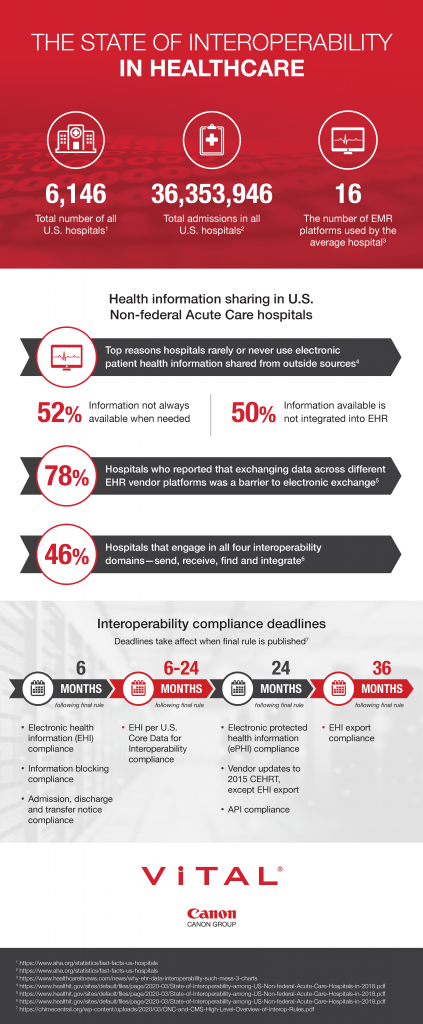Insights

Stats You Need to Know About the State of Interoperability
Interoperability is a goal of many health systems as they work to give patients better access to their data and improve internal workflows.
This vision includes patient access to medical information from the device and app of their choice. Providers can seamlessly share information between systems to have a fuller picture of a patient’s health history.
Governing this future is the 21st Century Cares Act, which includes final interoperability rules from the Office of the National Coordinator for Health Information Technology (ONC) and Centers for Medicare & Medicaid Services (CMS).
Over the past several years, these agencies have worked on a roadmap for interoperability. As health care systems navigated the first stages of meaningful use and electronic health record adoption, they have also been waiting on specific details for interoperability.
On May 1, the 21st Century Cures Act published, setting new benchmarks and deadlines for organizations. Some deadlines are as soon as six months from the publish date, which makes it critical to start preparing now.
Preparing for the ONC interoperability standards
There have been gains toward interoperability in the past several years, and more will be needed to meet compliance deadlines.
For the next and final rules on interoperability, leaders may want to take a look at their enterprise imaging technology. They will need to examine how it supports sending and receiving electronic health information (EHI), and sharing data with patients.
This infographic looks at the ONC interoperability standard, some of its key deadlines, and data on the current state of interoperability.

